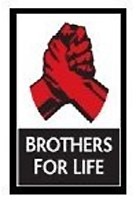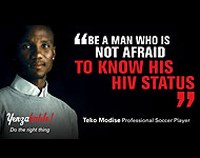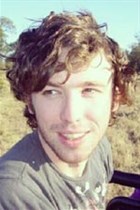
Top stories




Marketing & MediaThe Carling Black Label Cup and the campaign that changed fan engagement
Caxton Media 1 hour


More news



















What stands out is the combination of its educational format with the explicit depiction of criminal and sexual encounters and use of vulgar language.



For those unfamiliar with this fantastic SA series, it was set in a fictitious township school, Supatsela High; the storyline charted the progress, demise and resurgence of the school's youth and teachers as they grappled with the violence unleashed by school dropouts, community and school-going friends.
It was the most innovative approach to educational broadcasting ever seen before in post-apartheid SA. Employing aesthetic devices such as cutting-edge kwaito pop music, fast-paced visuals and authentic vernacular, it was an instant hit with the youth.
The first series won five Avanti Awards, including Best Production and Best Director, as well as the Japan Award, and was screened at festivals in London, Rotterdam, New York and Barcelona, according to SA production company The Bomb.
Educational broadcasting and its consequences
Njabulo Ndebele observed during the debate around Yizo Yizo in 1999, "If we assume that the dramatization of violence is intended to provoke a social reaction against it, then one must accept that some unintended consequences may result." (Ndebele 1999).
Since 1996, the SABC and the national department of education have been developing a close partnership to promote constructive uses of broadcasting that support educational transformation and curriculum reform - "[u]sing television to stimulate discussion as a precursor to pro-social action" (SABC Education 1999).


In 2011, the SABC and the department of education have released Brothers for Live (www.brothersforlife.org), a 26-part interactive talk show series focusing on the advancement of family health by highlighting men's health and their responsibilities in improving family health. It aims to address the important question of what masculinity means in contemporary society and the world.
Content resonance and interactivity
Its strength lies in its high-level interactivity through multiple channels such as YouTube and Facebook (something Yizo Yizo viewers never had). Yizo Yizo sparked conversation and Brothers for life facilitates conversation.
The department of education and the SABC are moving into a space where media channels and content are more globalised. SA youth is a far cry from the now outmoded and, in my opinion, naïvely and broad positioning of popular youth culture between 'traditional' and 'modernity'.
Yizo Yizo was a practical example of driven empowerment of citizens. It was indicative of subtle but important shifts in the dimensions of public culture in a highly divided society through drama. The strength for the series was that, although shocking and raw, at times it treated the youth as citizens, and more importantly, as competent participants in mass-mediated public.
"Finding ways to make the space transcend mass media in supportive of public life. It also means developing social arrangements in which local discussions are both possible and able to feed into larger discussions mediated both by technology and by gatherings of representatives."- Craig Calhoun
Planning content
In November 2011, the newly created content television division of the SABC issued a request for proposals book, which includes 12 briefs for drama, five briefs for entertainment, three briefs for children, 10 briefs for factual, five briefs for religion and seven education briefs.
We can learn some lessons from these two great SA educational programmes, in the context of the above-mentioned pillars of educational broadcasting: the resonance and relevancy of Yizo Yizo, and the global interactivity of Brothers for Life.
Programming can also extend the communication/story across a variety of channels; this brings social upliftment through quality and practical content. These are valuable experiences and successes in the caps of both the SABC and department of education, and the future of educational media looks bright in SA.
